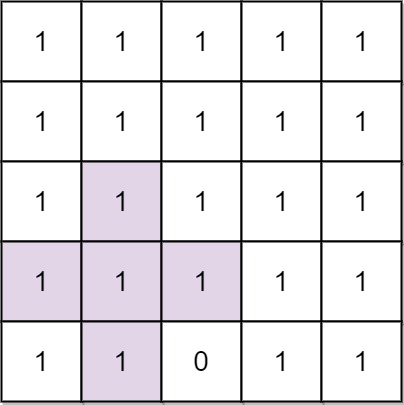g0701_0800.s0764_largest_plus_sign.readme.md Maven / Gradle / Ivy
Go to download
Show more of this group Show more artifacts with this name
Show all versions of leetcode-in-kotlin Show documentation
Show all versions of leetcode-in-kotlin Show documentation
Kotlin-based LeetCode algorithm problem solutions, regularly updated
764\. Largest Plus Sign
Medium
You are given an integer `n`. You have an `n x n` binary grid `grid` with all values initially `1`'s except for some indices given in the array `mines`. The ith element of the array `mines` is defined as mines[i] = [xi, yi] where grid[xi][yi] == 0.
Return _the order of the largest **axis-aligned** plus sign of_ 1_'s contained in_ `grid`. If there is none, return `0`.
An **axis-aligned plus sign** of `1`'s of order `k` has some center `grid[r][c] == 1` along with four arms of length `k - 1` going up, down, left, and right, and made of `1`'s. Note that there could be `0`'s or `1`'s beyond the arms of the plus sign, only the relevant area of the plus sign is checked for `1`'s.
**Example 1:**

**Input:** n = 5, mines = [[4,2]]
**Output:** 2
**Explanation:** In the above grid, the largest plus sign can only be of order 2. One of them is shown.
**Example 2:**

**Input:** n = 1, mines = [[0,0]]
**Output:** 0
**Explanation:** There is no plus sign, so return 0.
**Constraints:**
* `1 <= n <= 500`
* `1 <= mines.length <= 5000`
* 0 <= xi, yi < n
* All the pairs (xi, yi) are **unique**.